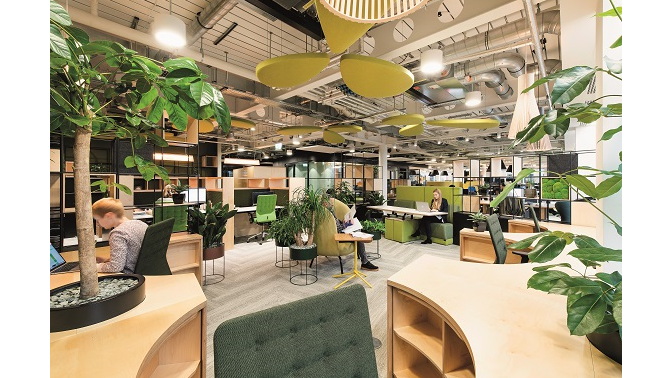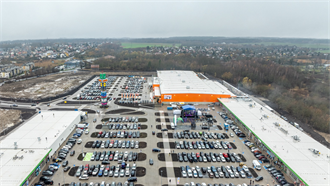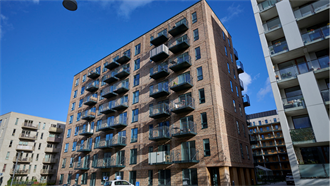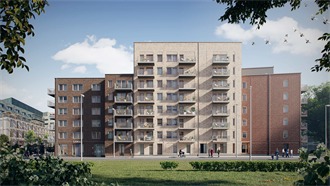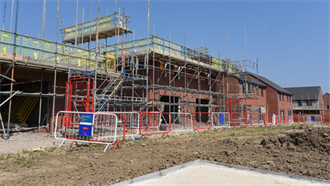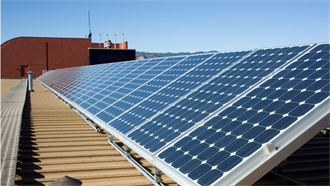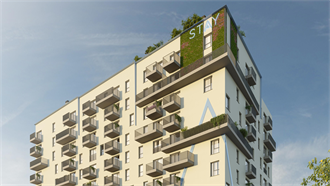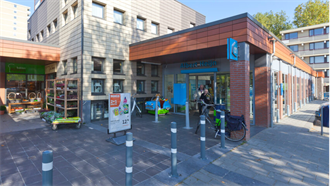The office promises to be very different post-pandemic and quality data is fundamental to making it a success, says international workspace provider HB Reavis, which is ahead of the curve in using technology for wellbeing at work.
For international workspace provider HB Reavis, the past 15 months or so must seem like a form of vindication of its long-term dedication to workspaces which value the wellbeing of users above glittering architecture – and redefine ‘premium’ by doing so.
Across Europe, restrictions are finally being lifted which broke the mould of work at tens of thousands of companies, last year. A slow – but seemingly irreversible – return to offices that have stood vacant since March 2020, is underway.
But in exchange for bidding farewell to the convenience and cost savings of working from home, members of staff have new, higher expectations. They value employers who safeguard their health and wellbeing in workspaces they have been asked – or told – to return to.
At HB Reavis, the key to successfully meeting these new expectations lies in harnessing data via smart technology. Today, actionable insights which support staff health and wellbeing matter more than ever, easing the transition into what some have dubbed the ‘new, new normal,’ – after last year’s ‘new normal’ of home working.
‘We were using technology to help tenants boost business performance long before the pandemic,’ says Pavel Jonczy, a member of the executive management team at HB Reavis. ‘It all starts with having data insights, but many firms are missing these.’
Indeed, the pandemic has resoundingly proved correct the long-term strategy HB Reavis has been implementing, meaning the company is years ahead of the sector curve in promoting health and wellbeing in workspaces. It looks like the rest of the sector has some catching up to do.
Being user-focused is popular with staff, surveys say. The Leesman Index, which measures workplace experiences across the world, recently recorded 100% employee satisfaction at the offices of a logistics firm in Warsaw, after it commissioned Origameo by HB Reavis, to redesign and fit-out its workspace, following a consultation to crystalise needs.
With the office exodus apparently at an end, how companies handle the return to work is likely to impact business performance. The link between staff wellbeing and productivity is well-established, meaning the stakes are high.
In the UK, 62% of managers believe the wellbeing and mental health of their teams will be affected by the return, according to research by the Chartered Management Institute (CMI).
One way to mitigate this and reassure staff is to understand their environment better. Smart technology in offices offers a way, employing sensors for monitoring conditions, combined with data analytics.
Premium redefined
As an office developer with a portfolio that includes the tallest building in the European Union, Varso Tower, in Warsaw, Poland, HB Reavis has a track record of going the extra mile to create a premium workspace. This may be one reason why the provider recently won the Real Estate Brand Institute’s prize for Strongest Office Developer Brand in Europe.
Also active in Germany and the UK, planning permission was recently granted for One Waterloo, a workspace comprising more than 111,000 m2, next to the railway station in central London. This 31-storey structure shall incorporate a publicly accessible garden promenade, with plentiful natural light and greenery to promote wellbeing. Meanwhile, in Berlin, the firm recently delivered ‘DSTRCT.Berlin’, blending local heritage with a modern workspace.
‘When we look at our portfolio, we focus on premium, A-Class assets from a wellbeing point of view,’ says Jonczy. ‘This means we examine how people really use the space. We are very much focused upon user experience.
‘We believe what matters is not necessarily the size of the lobby or an elaborate facade, but important things such supporting personal development, reducing stress and making a positive impact on health. These are the things which define an A-Class building for its users.’
HB Reavis’s premium-level wellbeing focus happens via a smart workspace solution called Symbiosy, integrated with the building management system (BMS). Sensors embedded within offices capture data and pass them to Symbiosy. It then collates actionable insights for tenants on an easy-to-use dashboard.
Metrics include environmental data such as air quality, humidity, carbon dioxide (Co2), temperature, and more. Occupiers can then take steps to protect colleagues’ wellbeing. For example, knowing Co2 levels has a productivity dividend, as high amounts are linked to diminished cognitive performance.
Post-Covid, digital tools like Symbiosy look set to play a role in allaying employees’ anxieties around close contact in enclosed spaces. After all, nobody wants poor air quality following the past year and a half. Amid current uncertainty, HB Reavis has an eye-catching pedigree in health and wellbeing built up over many years, by distributing more meterage its competitors, while maximising space potential within the limits of regulation.
Another tech tool whose time has surely come, is the capability to contact trace – to track interactions between users in a space. HB Reavis has deployed it for years, already.
The firm has first-hand experience of contact-tracing’s power. At its own office, it located colleagues who interacted with someone who later tested positive for Covid-19. Managers could rapidly locate affected staff and advise them to self-isolate.
New work patterns
At the same time as employers face pressure to transform their workspaces into wellbeing havens, there are vocal calls to let staff spend less time in them. It is early days yet, but a hybrid model of two days a week at the office, could be popular.
Actually, 80% of UK managers already engage in this kind of hybrid working, reports CMI, and more than half (56%) say they want to spend only two days a week in the office, in future.
How effectively offices protect employees’ wellbeing will feed into the ‘war for talent,’ too. Forty four percent of workers under 40 years old told CMI they would start looking for a new job, if their boss insisted upon a full return to the office.
The signals seem clear: if you want to attract high-calibre staff to your office, then you need workspaces which people want to be in. This may involve adopting a new mindset, with implications for quantity of space and its function. Basically, users need providers who understand the office is changing.
‘In the near future, a work-case for a building might not be compelling in itself,’ says Jonczy. ‘So this question of the use-case is key. There is still uncertainty about what the future of the office really is.
‘For example, many people report they find doing ‘focus-work’ such as paperwork better when working from home than at the office, because of fewer distractions.
‘But collaboration and creative work are more efficient when done together physically, which means having spaces which are social in their design and nature.’
This might look like extra communal areas for meetings, knowledge sharing, or creative tasks which work best in-person.
But there is no ‘one-size-fits-all’ approach.
‘Getting this right will be specific to each company and their employees’ experience,’ says Jonczy. ‘Carefully consider what your goals are first, then how the workspace can help you achieve them.’
Flexible future
As business needs fluctuate, providers which offer tenants flexibility amid uncertainty should be in demand. Research by CBRE found there is an expectation that the allocation of flexible space will double in the next two years, among firms whose portfolio currently is 50% flexible or more.
Qubes is a flex-office brand offering fully serviced workspaces on short-term leases, from HB Reavis. Tenants can grow or shrink their allocation quickly, in response to shifting demand. New locations are coming soon, expanding the current portfolio of sites in Budapest and Bratislava.
Dealing flexibly with unpredictability will be a strength for businesses in Europe, this year and beyond. Data-based solutions can make the process successful, says Jonczy.
‘The most important thing will be gaining the insights needed to know what employees expect, how decisions are impacting performance, and what that means for the future,’ he says.
HB Reavis Facts & Figures:
- CEO: Marian Herman
- Current total GLA delivered to date: 1.3 mln m2
- Gross development value to date: €4.2 bn
- GLA pipeline is 1.1 mln m2, worth €6.7 bn
- Total GLA signed during Q2 2021: 46,600 m2
- Computing giant IBM recently let more than 30,000m2 in Bratislava

